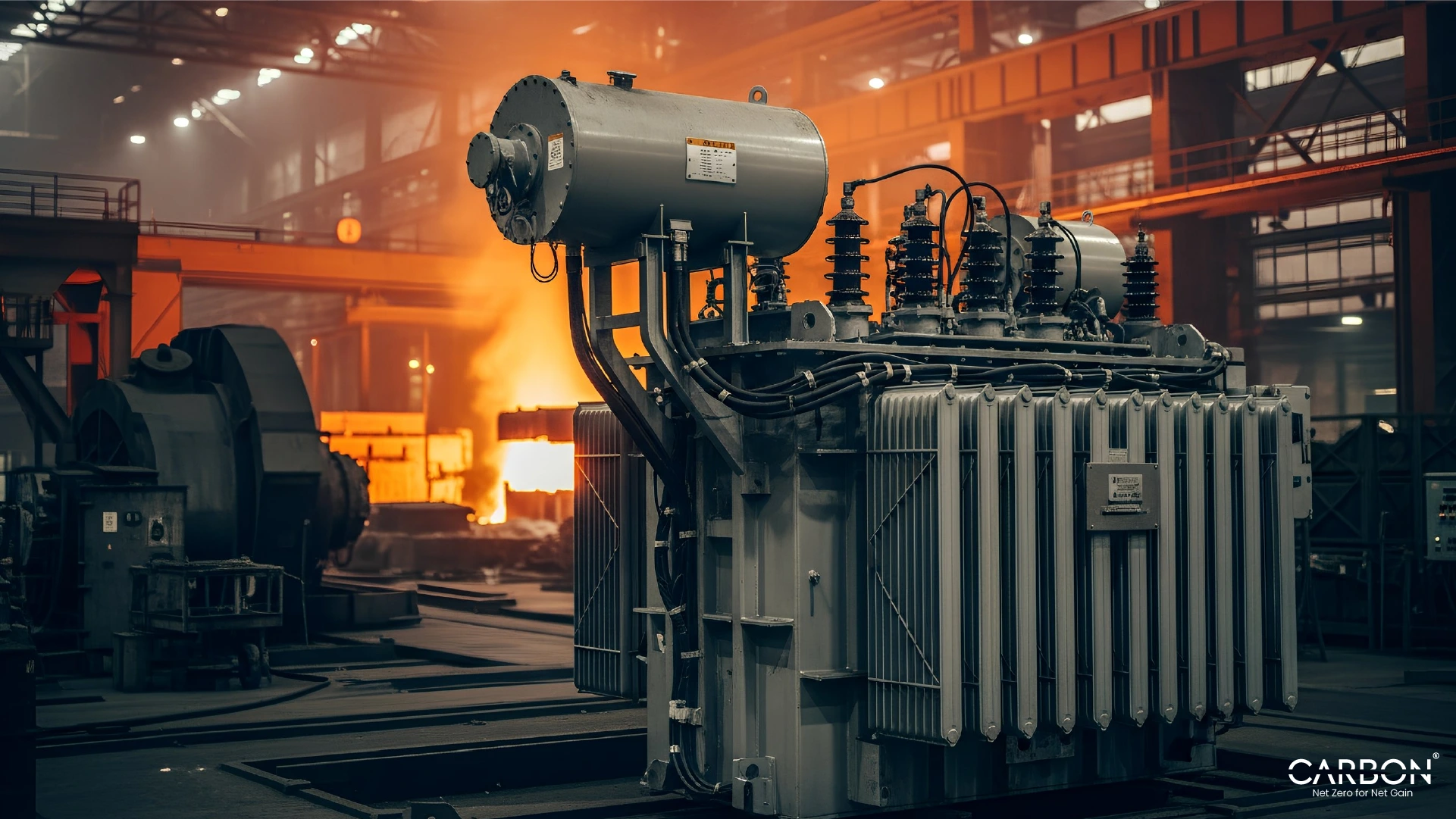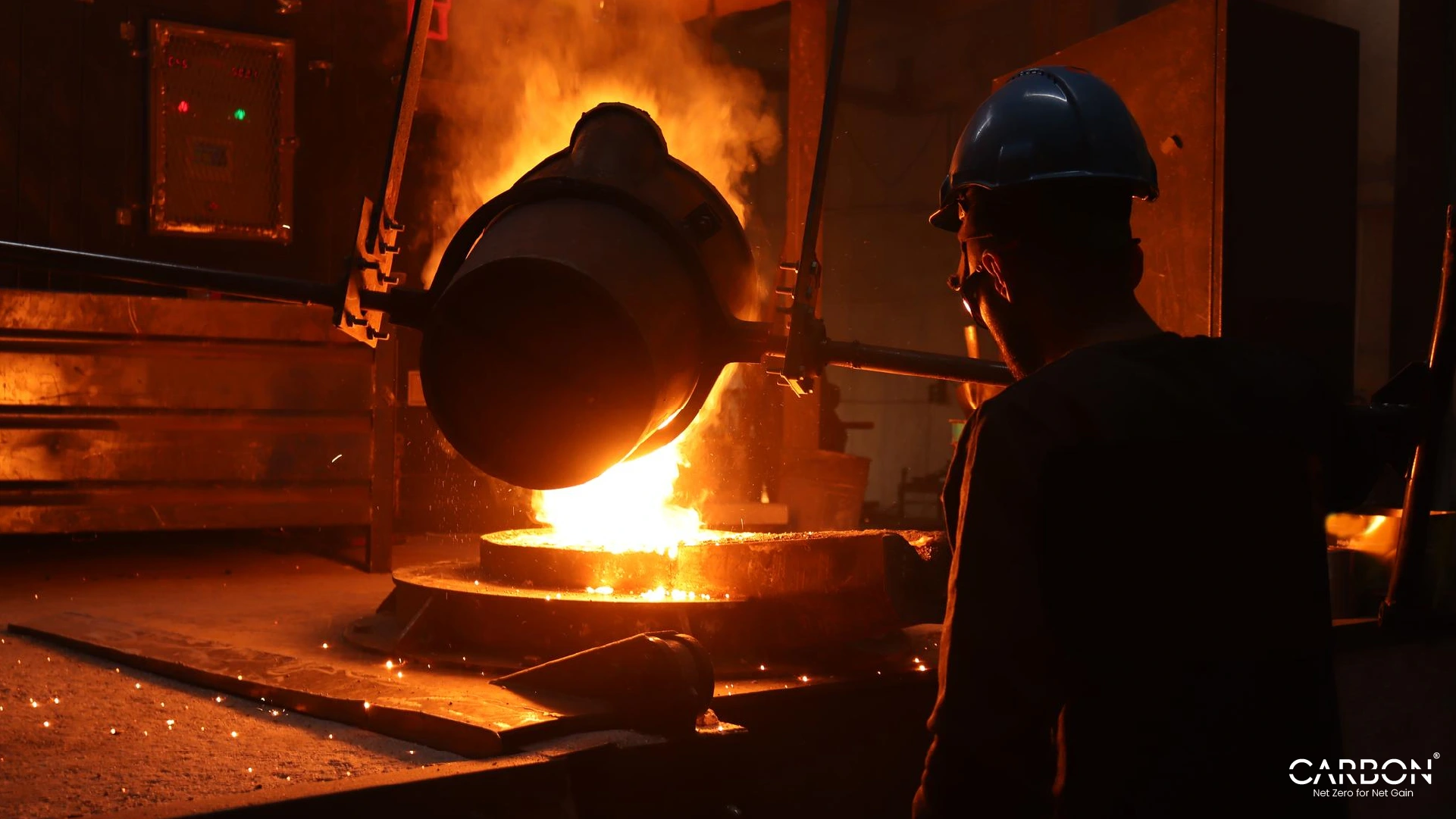Key Takeaways
• Install real-time energy monitoring devices and software to identify the 51% of manufacturing energy that’s typically wasted
• Follow ISO 50001’s Plan-Do-Check-Act cycle to create structured energy management with measurable targets and continuous improvement
• Secure leadership buy-in and train all staff to create an energy-conscious culture where accountability drives sustainable savings
• Focus on energy-intensive processes like heating, cooling, and mechanical systems that consume the majority of factory power
• Use centralized dashboards and monitoring software to transform raw energy data into actionable cost-cutting strategies
You know the feeling. It’s month-end. The energy bill hits your inbox.
And your heart sinks.
Another record high. Another chunk of profit vaporized. Another sleepless night wondering how long you can keep absorbing these costs before something breaks.
Here’s what we’re seeing: factories with serious energy consumption monitoring are slashing costs by 15-30%. Those flying blind? They’re watching their margins disappear with every kilowatt-hour.
The numbers don’t lie.
Energy costs have spiked 22% for industrial facilities since 2023^[-1]. What started as a temporary squeeze has become permanent financial pressure. The manufacturers who adapt survive. The ones who don’t? They’re already closing doors.
But here’s the thing most people miss.
The problem isn’t recognizing that energy costs are killing you. It’s knowing what to do about it.
Most industrial energy monitoring systems look intimidating. Complex dashboards. Endless data streams. Technical jargon that makes your head spin.
Strip away the noise, and you’re left with something simple: the right monitoring system tells you exactly where your money is going before it’s gone.
That’s the difference between guessing and knowing. Between reacting and controlling.
What you’ll get from this guide
We’ll show you exactly how to cut energy costs through smart monitoring. From choosing the right sensors to building a culture where everyone cares about efficiency.
The methods we’re sharing? They’ve helped manufacturers slash energy bills by up to 40%^[-2].
And our ROI calculator will show you what that looks like for your specific facility in minutes.
Because throwing money at rising energy costs isn’t a strategy. It’s surrender.
Understanding Energy Consumption in Manufacturing
Image Source: Visual Capitalist
Manufacturing is getting hammered by energy costs. And it’s not getting better.
The smart money knows this isn’t just about paying higher bills. It’s about understanding where every BTU goes and why it matters to your bottom line.
Why energy costs are rising in 2025
The story writes itself in the numbers.
Manufacturing associations are screaming for relief from industrial energy bills that now rank among the highest in advanced economies [10]. What started as a 2021 price shock has settled into permanent financial pressure.
Geopolitical chaos broke the energy markets. Natural gas in Europe costs nearly six times more than in North America [1]. Energy-intensive manufacturers have been forced to shut down entire facilities, caught between exploding input costs and shrinking demand [1].
Here’s the reality: your energy budget isn’t just leaking anymore. The holes are getting bigger while the water gets more expensive.
Some manufacturers couldn’t adapt fast enough. They’ve already suspended production rather than burn cash on energy they can’t afford [1].
The role of energy in production efficiency
Energy isn’t overhead. It’s the engine.
Energy-intensive industries consume over 75% of U.S. industrial energy demand and generate roughly INR 2278.27 trillion in GDP [2]. When you improve efficiency, even small gains multiply into serious savings.
For most manufacturers, energy represents 4.1% of total revenues [11]. But in chemicals and metallurgy? That jumps to between 7.2% and 13.6% [11].
That’s not just a line item. That’s the difference between profit and loss.
Our ROI calculator will show you exactly what strategic energy consumption monitoring systems could save your facility. The numbers might surprise you.
Common energy-intensive processes in factories
Some processes are energy vampires. They’re sucking your budget dry, and most manufacturers don’t even know which ones are the worst offenders.
Heating and cooling operations top the list. High-temperature processes above 250°C are particularly brutal [3]. Steel production blast furnaces operating above 1,500°C [4] can make or break quarterly results.
Chemical reactions are next. Distillation, cracking, and polymerization processes [4] run continuously, burning through energy around the clock.
Mechanical systems including milling, grinding, and crushing equipment [5] create massive energy draw during peak production cycles.
HVAC systems account for approximately 15% of all manufacturing energy use [12]. That’s money flowing out the vents.
Here’s what we’ve learned: an industrial energy consumption monitoring system spots these energy drains with surgical precision. Our clients routinely discover they can maximize savings by targeting their hungriest processes first.
The manufacturers who survive the next decade won’t be the ones with the cheapest labor or the fanciest equipment. They’ll be the ones who know exactly where every kilowatt-hour goes.
Building an Effective Energy Monitoring System
Most manufacturers approach energy monitoring like they’re assembling IKEA furniture without the manual.
They buy sensors. Install software. Set up dashboards.
Then wonder why their energy bills keep climbing.
Here’s the truth: you don’t need more monitoring. You need smarter monitoring.
The hardware that actually works
Your foundation is current sensors. These clip-on devices measure electric energy at circuit, zone, or machine level [1]. Non-invasive installation means no downtime, no rewiring headaches [1].
For factories, you’ll need three-phase monitoring. Sensors range from 1A to 600A per phase [1].
The key? Don’t go cheap on sensors. Garbage data in, garbage decisions out.
Real-time monitoring is where the magic happens
Here’s a number that’ll make you wince: 51% of manufacturing energy gets wasted [7].
That’s like throwing half your payroll into a shredder every month.
Real-time monitoring catches these inefficiencies as they happen. No more waiting for the monthly shock. No more wondering where your money went.
Software that thinks, not just collects
Your sensors are useless without smart software to interpret the data. The right platform should:
- Pull data from meters, DCSs, PLCs across multiple sites
- Store historical patterns for trend analysis
- Display everything in clear, actionable visualizations [9]
Data collection without analysis is just expensive record-keeping [9]. What you need is software that turns numbers into profit opportunities.
Dashboards that drive decisions
Your dashboard is mission control. It shows consumption patterns in real-time, flags anomalies before they become problems, and tracks progress against targets [10][10].
The best systems even predict equipment failures and schedule maintenance [1]. That’s not just efficiency, that’s avoiding downtime disasters.
Ready to see what this looks like for your facility? Book a demo with CarbonMinus and use our ROI calculator to see your specific savings potential.
Getting Serious About Energy Management: The ISO 50001 Framework
Look, you can install all the sensors in the world. You can buy the fanciest monitoring software. You can track every kilowatt-hour.
But without a structured approach, you’re just collecting data.
ISO 50001 gives you the framework that turns monitoring into management. Think of it as your energy management operating system—the difference between hoping for savings and systematically delivering them.
The standard follows a Plan-Do-Check-Act cycle that works for any manufacturer, whether you’re running a single facility or managing plants across continents.
Plan: Building Your Energy Management Foundation
This isn’t about pretty mission statements. It’s about getting concrete.
First, you need management commitment—not just a signature on a policy document, but actual budget allocation and resource dedication [11]. Without that, your energy initiatives die in committee meetings.
Here’s what the planning phase delivers:
- Define your scope: Building, plant, or entire organization
- Assemble your energy team: Cross-functional expertise from operations, maintenance, and finance
- Document your energy policy: Clear priorities that everyone understands
- Identify significant energy uses: Your biggest energy drains
- Establish performance indicators: Metrics that matter to your bottom line
Your targets need to be SMART energy goals—specific, measurable, assignable, realistic, and time-bound [12]. Data-driven, not wishful thinking. Stretch goals can drive innovation, but unrealistic targets kill motivation [13].
Do: Execution That Delivers Results
Now you implement what you’ve planned. This phase focuses on:
- Documentation management: Recording both expectations and actual results
- Communication across all levels: From C-suite to factory floor
- Training personnel: Especially those handling significant energy uses
- Energy procurement specifications: Making efficiency part of your purchasing decisions [11]
This is where your energy management system becomes operational, not theoretical.
Check: Measuring What Matters
You’re measuring results against expectations. No hiding behind vague promises or good intentions.
The audit phase requires:
- Legal and voluntary compliance verification: Making sure you’re meeting all requirements
- Monitoring and measurement plans: Tracking performance against targets
- Internal audits: Verifying your system actually works [11]
Your audits examine processes, interview staff, and review data—essentially a diagnostic check on your energy management health [14].
Act: Continuous Improvement That Sticks
Top management reviews the system effectiveness and makes decisions based on actual data [15]. This isn’t about ticking compliance boxes—it’s about building an energy-conscious culture where improvements become standard practice.
Here’s what makes ISO 50001 different: it doesn’t dictate specific savings targets. You set your own goals based on your operations [16]. That’s why it works for any manufacturing facility.
Ready to implement a structured energy management approach? Book a demo with CarbonMinus to see how our ROI calculator can reveal your specific savings potential.
Driving Organizational Change for Long-Term Savings
Here’s the hard truth about energy monitoring: the tech is the easy part.
You can install the smartest sensors. Build the slickest dashboards. Deploy AI that would make Google jealous.
But if your people don’t care? You’ve bought yourself an expensive paperweight.
That shiny new energy consumption monitoring system won’t save you a dime if your team treats it like another corporate initiative to ignore. It’s like buying a Ferrari but never learning to drive stick—all that potential, completely wasted.
Getting leadership buy-in and setting policies
Energy initiatives die in committee rooms.
Your leadership needs to view energy management as core business, not just an environmental nice-to-have [6]. Without executive commitment, your best efforts will fizzle out faster than a bad product launch.
Here’s what actually works: Form an executive steering committee with representatives from operations, finance, and legal. These committees typically meet several times yearly, giving energy managers regular opportunities to secure support for major projects [6].
Make your pitch concrete. Showcase the business case—operational efficiency, cost reduction—alongside the “triple bottom line” benefits [6].
Want a number that gets CFOs’ attention? Energy efficiency improvements cost about one-third what energy generation does [6]. That’s not just savings. That’s competitive advantage.
Training teams to identify and report inefficiencies
Training isn’t a checkbox. It’s your secret weapon.
Most companies treat energy training like safety videos, something you sit through once and forget. That’s backwards thinking.
Create programs that cover energy conservation basics, cost impact, and specific actions employees can take [17]. Then incorporate energy efficiency into onboarding so new hires embrace these values from day one [17].
Your teams need practical knowledge of:
- Energy management systems and smart meters
- Reporting procedures for identifying inefficiencies
- Specific actions for high-impact areas
Training empowers employees to contribute actively to energy efficiency goals, leading to more sustainable and cost-effective operations [17]. Without proper training, even the best energy consumption monitoring system will underperform.
Creating a culture of energy accountability
Accountability is where the magic happens.
When everyone feels responsible for energy use, small actions multiply into significant savings. Establish energy efficiency teams or appoint energy leaders to drive initiatives [18]. These champions conduct workshops and awareness campaigns that educate colleagues about conservation [18].
Recognition programs dramatically boost participation—honor individuals or divisions for their sustainability achievements [6]. Team competitions work too. Different shifts competing to save energy? That creates excitement while delivering real results [6].
The goal isn’t just compliance. It’s ownership.
Want to see your potential savings? Use our ROI calculator to discover how maximizing savings through organizational change could transform your bottom line.
The manufacturers winning in 2025 aren’t the biggest
They’re not the ones with the shiniest equipment.
They’re the ones who stopped guessing about energy costs.
Those 15-30% cost reductions we’ve talked about? They’re not theoretical. They’re real dollars flowing straight to your bottom line. Money that funds your next expansion, weathers the next supply chain crisis, or simply keeps you competitive when your rivals are scrambling.
Here’s what separates the winners from the rest:
They built the right stack. Monitoring devices that actually work. Software that turns data into decisions. Dashboards that tell the truth about where money’s bleeding out.
But here’s what really matters: they got their people on board.
Your technology is only as powerful as the culture that drives it. Leadership buy-in isn’t a nice-to-have—it’s the difference between a system that saves money and expensive hardware that collects dust.
We’ve seen it happen. Manufacturers who get everyone from the C-suite to the factory floor speaking the same energy language slash their bills faster than anyone thought possible.
The path forward is clear.
Start with monitoring devices that clip onto your existing infrastructure. Plug them into software that makes sense of the chaos. Build dashboards that give you control instead of confusion.
Want to see what this looks like for your facility? Book a demo with CarbonMinus and get the specifics. Our ROI calculator will show you exactly how much you’re leaving on the table right now.
The tools exist. The process works. The savings are waiting.
The only question left: how much longer can you afford to throw money at rising energy costs?
Energy monitoring isn’t just another tech upgrade. It’s your financial lifeline in a world where every kilowatt-hour counts.
FAQs
How can manufacturers effectively reduce their energy costs?
Manufacturers can reduce energy costs by implementing real-time energy consumption monitoring systems, focusing on energy-intensive processes, and following structured approaches like ISO 50001. Proper insulation, efficient heating systems, and reducing “always-on” appliances can also contribute to significant savings.
What are some key strategies for monitoring energy consumption in factories?
Key strategies include installing energy consumption monitoring devices, integrating real-time monitoring systems, using energy management software for insights, and centralizing data with industrial energy dashboards. These tools help identify inefficiencies and enable quick responses to energy waste.
How does ISO 50001 help in managing energy consumption?
ISO 50001 provides a structured approach to energy management through a Plan-Do-Check-Act cycle. It involves setting energy goals, identifying key metrics, deploying systems, training staff, auditing performance, and continuously improving energy efficiency practices.
What role does organizational culture play in energy conservation?
Organizational culture is crucial for sustainable energy savings. Creating a culture of energy accountability involves getting leadership buy-in, training teams to identify and report inefficiencies, and implementing recognition programs for energy-saving achievements. This ensures that energy efficiency becomes a part of the company’s DNA.
What are some common energy-intensive processes in manufacturing?
Common energy-intensive processes in manufacturing include heating and cooling operations (especially high-temperature processes), chemical reactions (like distillation and polymerization), mechanical systems (such as milling and grinding), and HVAC systems. Focusing on optimizing these areas can lead to substantial energy savings.
References
[1] – https://www.reuters.com/sustainability/climate-energy/high-energy-costs-threaten-uk-manufacturings-future-industry-warns-2025-06-01/
[2] – https://rsmus.com/insights/industries/energy/the-energy-supply-scramble-and-its-impact-on-manufacturing.html
[3] – https://www.energy.gov/eere/iedo/energy-intensive-industries
[4] – https://www.caixabankresearch.com/en/sectoral-analysis/industry/rising-energy-prices-and-their-impact-manufacturing-industry-which
[5] – https://www.sciencedirect.com/topics/engineering/energy-intensive-industry
[6] – https://www.indmallautomation.com/what-manufacturing-uses-the-most-energy/
[7] – https://www.indmall.in/faq/what-manufacturing-uses-the-most-energy/?srsltid=AfmBOorC8bte7enATcvHLFr0YtEXr5a5SXg5ZCJ0etpfelope0EJEdou
[8] – https://mavarick.ai/blogs/energy/energy-efficiency-in-manufacturing-complete-guide/
[9] – https://www.pressac.com/insights/smart-sensors-for-monitoring-machine-energy-use/
[10] – https://www.output.industries/insights/best-energy-monitoring-software-for-manufacturers
[11] – https://www.dataparc.com/blog/energy-management-manufacturing-monitoring-consumption/
[12] – https://www.inetsoft.com/info/energy_management_dashboard_software/
[13] – https://betterbuildingssolutioncenter.energy.gov/iso-50001/getting-started-iso-50001
[14] – https://www.dexma.com/blog-en/smart-goals-for-energy-management/
[15] – https://www.bieroundtable.com/energy-management/energy-management-goals-targets/
[16] – https://goaudits.com/blog/iso-50001-audits/
[17] – https://www1.eere.energy.gov/manufacturing/eguide/iso_step_5.html
[18] – https://mygreenmontgomery.org/2020/iso-50001-a-framework-for-continuous-energy-improvement/
[19] – https://betterbuildingssolutioncenter.energy.gov/sites/default/files/attachments/QuickStart Guide – October 2020_5.pdf
[20] – https://be-cis.com/manufacturing-facilities-energy-tip/
[21] – https://askomnium.co.uk/strategies-for-enhancing-corporate-energy-efficiency/




